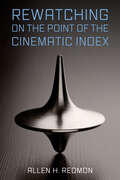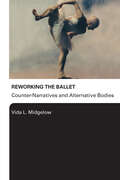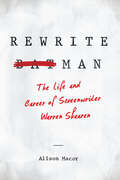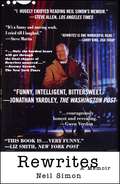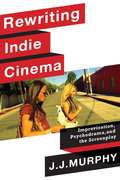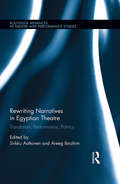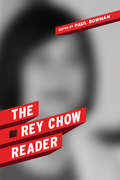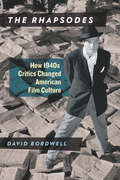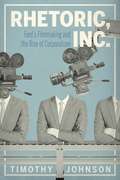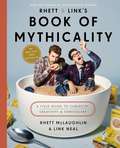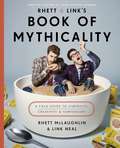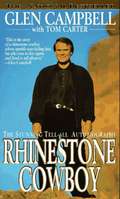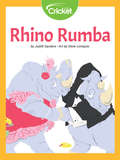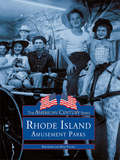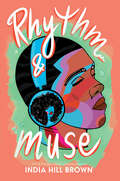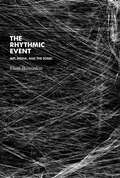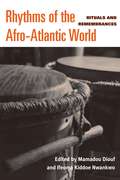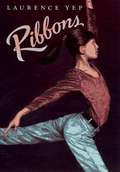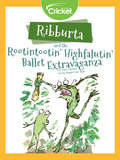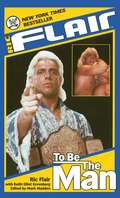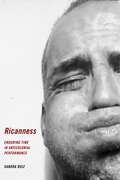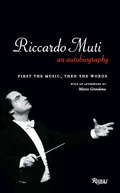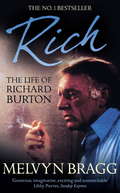- Table View
- List View
Rewatching on the Point of the Cinematic Index
by Allen H. RedmonRewatching on the Point of the Cinematic Index offers a reassessment of the cinematic index as it sits at the intersection of film studies, trauma studies, and adaptation studies. Author Allen H. Redmon argues that far too often scholars imagine the cinematic index to be nothing more than an acknowledgment that the lens-based camera captures and brings to the screen a reality that existed before the camera. When cinema’s indexicality is so narrowly defined, the entire nature of film is called into question the moment film no longer relies on a lens-based camera. The presence of digital technologies seemingly strips cinema of its indexical standing. This volume pushes for a broader understanding of the cinematic index by returning to the early discussions of the index in film studies and the more recent discussions of the index in other digital arts. Bolstered by the insights these discussions can offer, the volume looks to replace what might be best deemed a diminished concept of the cinematic index with a series of more complex cinematic indices, the impoverished index, the indefinite index, the intertextual index, and the imaginative index. The central argument of this book is that these more complex indices encourage spectators to enter a process of ongoing adaptation of the reality they see on the screen, and that it is on the point of these indices that the most significant instances of rewatching movies occur. Examining such films as John Lee Hancock’s Saving Mr. Banks (2013); Richard Linklater’s oeuvre; Paul Greengrass’s United 93 (2006); Oliver Stone’s World Trade Center (2006); Stephen Daldry’s Extremely Loud and Incredibly Close (2011); and Christopher Nolan’s Dunkirk (2017), Inception (2010), and Memento (2000), Redmon demonstrates that the cinematic index invites spectators to enter a process of ongoing adaptation.
Reworking the Ballet: Counter Narratives and Alternative Bodies
by Vida L. MidgelowChallenging and unsettling their predecessors, modern choreographers such as Matthew Bourne, Mark Morris and Masaki Iwana have courted controversy and notoriety by reimagining the most canonical of Classical and Romantic ballets. In this book, Vida L. Midgelow illustrates the ways in which these contemporary reworkings destroy and recreate their source material, turning ballet from a classical performance to a vital exploration of gender, sexuality and cultural difference. Reworking the Ballet: Counter Narratives and Alternative Bodies articulates the ways that audiences and critics can experience these new versions, viewing them from both practical and theoretical perspectives, including: eroticism and the politics of touch performing gender cross-casting and cross-dressing reworkings and intertextuality cultural exchange and hybridity.
Rewrite Man: The Life and Career of Screenwriter Warren Skaaren
by Alison MacorIn Rewrite Man, Alison Macor tells an engrossing story about the challenges faced by a top screenwriter at the crossroads of mixed and conflicting agendas in Hollywood. Whether writing love scenes for Tom Cruise on the set of Top Gun, running lines with Michael Keaton on Beetlejuice, or crafting Nietzschean dialogue for Jack Nicholson on Batman, Warren Skaaren collaborated with many of New Hollywood&’s most powerful stars, producers, and directors. By the time of his premature death in 1990, Skaaren was one of Hollywood&’s highest-paid writers, although he rarely left Austin, where he lived and worked. Yet he had to battle for shared screenwriting credit on these films, and his struggles yield a new understanding of the secretive screen credit arbitration process—a process that has only become more intense, more litigious, and more public for screenwriters and their union, the Writers Guild of America, since Skaaren&’s time. His story, told through a wealth of archival material, illuminates crucial issues of film authorship that have seldom been explored.
Rewrites: A Memoir
by Neil SimonBarefoot in the Park, The Odd Couple, Plaza Suite, The Goodbye Girl, The Out-of-Towners, The Sunshine Boys -- Neil Simon's plays and movies have kept many millions of people laughing for almost four decades. Today he is recognized not only as the most successful American playwright of all time, but also as one of the greatest. More than the humor, however, it is the humanity of Neil Simon's vision that has made him America's most beloved playwright and earned him such enduring success. Now, in Rewrites, he has written a funny, deeply touching memoir, filled with details and anecdotes of the writing life and rich with the personal experiences that underlie his work. Since Come Blow Your Horn first opened on Broadway in 1960, few seasons have passed without the appearance of another of his laughter-filled plays, and indeed on numerous occasions two or more of his works have been running simultaneously. But his success was something Neil Simon never took for granted, nor was the talent to create laughter something that he ever treated carelessly: it took too long for him to achieve the kind of acceptance -- both popular and critical -- that he craved, and the path he followed frequently was pitted with hard decisions. All of Neil Simon's plays are to some extent a reflection of his life, sometimes autobiographical, other times based on the experiences of those close to him. What the reader of this warm, nostalgic memoir discovers, however, is that the plays, although grounded in Neil Simon's own experience, provide only a glimpse into the mind and soul of this very private man. In Rewrites, he tells of the painful discord he endured at home as a child, of his struggles to develop his talent as a writer, and of his insecurities when dealing with what proved to be his first great success -- falling in love. Supporting players in the anecdote-filled memoir include Sid Caesar, Jerry Lewis, Walter Matthau, Robert Redford, Gwen Verdon, Bob Fosse, Maureen Stapleton, George C. Scott, Peter Sellers, and Mike Nichols. But always at center stage is his first love, his wife Joan, whose death in the early seventies devastated him, and whose love and inspiration illuminate this remarkable and revealing self-portrait. Rewrites is rich in laughter and emotion, and filled with the memories of a sometimes sweet, sometimes bittersweet life.
Rewriting Indie Cinema: Improvisation, Psychodrama, and the Screenplay (Film and Culture Series)
by J. J. MurphyMost films rely on a script developed in pre-production. Yet beginning in the 1950s and continuing through the recent mumblecore movement, key independent filmmakers have broken with the traditional screenplay. Instead, they have turned to new approaches to scripting that allow for more complex characterization and shift the emphasis from the page to performance.In Rewriting Indie Cinema, J. J. Murphy explores these alternative forms of scripting and how they have shaped American film from the 1950s to the present. He traces a strain of indie cinema that used improvisation and psychodrama, a therapeutic form of improvised acting based on a performer’s own life experiences. Murphy begins in the 1950s and 1960s with John Cassavetes, Shirley Clarke, Barbara Loden, Andy Warhol, Norman Mailer, William Greaves, and other independent directors who sought to create a new type of narrative cinema. In the twenty-first century, filmmakers such as Gus Van Sant, the Safdie brothers, Joe Swanberg, and Sean Baker developed similar strategies, sometimes benefitting from the freedom of digital technology. In reading key films and analyzing their techniques, Rewriting Indie Cinema demonstrates how divergence from the script has blurred the divide between fiction and nonfiction. Showing the ways in which filmmakers have striven to capture the subtleties of everyday behavior, Murphy provides a new history of American indie filmmaking and how it challenges Hollywood industrial practices.
Rewriting Narratives in Egyptian Theatre: Translation, Performance, Politics (Routledge Advances in Theatre & Performance Studies)
by Sirkku Aaltonen Areeg IbrahimThis study of Egyptian theatre and its narrative construction explores the ways representations of Egypt are created of and within theatrical means, from the 19th century to the present day. Essays address the narratives that structure theatrical, textual, and performative representations and the ways the rewriting process has varied in different contexts and at different times. Drawing on concepts from Theatre and Performance Studies, Translation Studies, Cultural Studies, Postcolonial Studies, and Diaspora Studies, scholars and practitioners from Egypt and the West enter into dialogue with one another, expanding understanding of the different fields. The articles focus on the ways theatre texts and performances change (are rewritten) when crossing borders between different worlds. The concept of rewriting is seen to include translation, transformation, and reconstruction, and the different borders may be cultural and national, between languages and dramaturgies, or borders that are present in people’s everyday lives. Essays consider how rewritings and performances cross borders from one culture, nation, country, and language to another. They also study the process of rewriting, the resulting representations of foreign plays on stage, and representations of the Egyptian revolution on stage and in Tahrir Square. This assessment of the relationship between theatre practices, exchanges, and rewritings in Egyptian theatre brings vital coverage to an undervisited area and will be of interest to developments in theatre translation and beyond.
The Rey Chow Reader
by Rey ChowRey Chow is arguably one of the most prominent intellectuals working in the humanities today. Characteristically confronting both entrenched and emergent issues in the interlocking fields of literature, film and visual studies, sexuality and gender, postcolonialism, ethnicity, and cross-cultural politics, her works produce surprising connections among divergent topics at the same time as they compel us to think through the ethical and political ramifications of our academic, epistemic, and cultural practices. This anthology - the first to collect key moments in Chow's engaging thought - provides readers with an ideal introduction to some of her most forceful theoretical explorations. Organized into two sections, each of which begins with a brief statement designed to establish linkages among various discursive fields through Chow's writings, the anthology also contains an extensive Editor's Introduction, which situates Chow's work in the context of contemporary critical debates. For all those pursuing transnational cultural theory and cultural studies, this book is an essential resource.
The Rhapsodes: How 1940s Critics Changed American Film Culture
by David BordwellPauline Kael, Andrew Sarris, and Roger Ebert were three of America's most revered and widely read film critics, more famous than many of the movies they wrote about. But their remarkable contributions to the burgeoning American film criticism of the 1960s and beyond were deeply influenced by four earlier critics: Otis Ferguson, James Agee, Manny Farber, and Parker Tyler. Throughout the 1930s and '40s, Ferguson, Agee, Farber, and Tyler scrutinized what was on the screen with an intensity not previously seen in popular reviewing. Although largely ignored by the arts media of the day, they honed the sort of serious discussion of films that would be made popular decades later by Kael, Sarris, Ebert and their contemporaries. With The Rhapsodes, renowned film scholar and critic David Bordwell--an heir to both those legacies--restores to a wider audience the work of Ferguson, Agee, Farber, and Tyler, critics he calls the "Rhapsodes" for the passionate and deliberately offbeat nature of their vernacular prose. Each broke with prevailing currents in criticism in order to find new ways to talk about the popular films that contemporaries often saw at best as trivial, at worst as a betrayal of art. Ferguson saw in Hollywood an engaging, adroit mode of popular storytelling. Agee sought in cinema the lyrical epiphanies found in romantic poetry. Farber, trained as a painter, brought a pictorial intelligence to bear on film. A surrealist, Tyler treated classic Hollywood as a collective hallucination that invited both audience and critic to find moments of subversive pleasure. With his customary clarity and brio, Bordwell takes readers through the relevant cultural and critical landscape and considers the critics' writing styles, their conceptions of films, and their quarrels. He concludes by examining the profound impact of Ferguson, Agee, Farber, and Tyler on later generations of film writers. The Rhapsodes allows readers to rediscover these remarkable critics who broke with convention to capture what they found moving, artful, or disappointing in classic Hollywood cinema and explores their robust--and continuing--influence.
Rhetoric, Inc.: Ford’s Filmmaking and the Rise of Corporatism (RSA Series in Transdisciplinary Rhetoric #15)
by Timothy JohnsonIn 1914, the Ford Motor Company opened its Motion Picture Laboratory, an in-house operation that produced motion pictures to educate its workforce and promote its products. Just six years later, Ford films had found their way into schools and newsreels, travelogues, and even feature films in theaters across the country. By 1961, it is estimated that the company’s movies had captured an audience of sixty-four million people.This study of Ford’s corporate film program traces its growth and rise in prominence in corporate America. Drawing on nearly three hundred hours of material produced between 1914 and 1954, Timothy Johnson chronicles the history of Ford’s filmmaking campaign and analyzes selected films, visual and narrative techniques, and genres. He shows how what began as a narrow educational initiative grew into a global marketing strategy that presented a vision not just of Ford or corporate culture but of American life more broadly. In these films, Johnson uncovers a powerful rhetoric that Ford used to influence American labor, corporate style, production practices, road building, suburbanization, and consumer culture. The company’s early and continued success led other corporations to adopt similar programs.Persuasive and thoroughly researched, Rhetoric, Inc. documents the role that imagery and messaging played in the formation of the modern American corporation and provides a glimpse into the cultural turn to the economy as a source of entertainment, value, and meaning.
Rhetoric, Inc.: Ford’s Filmmaking and the Rise of Corporatism (RSA Series in Transdisciplinary Rhetoric #15)
by Timothy JohnsonIn 1914, the Ford Motor Company opened its Motion Picture Laboratory, an in-house operation that produced motion pictures to educate its workforce and promote its products. Just six years later, Ford films had found their way into schools and newsreels, travelogues, and even feature films in theaters across the country. It is estimated that by 1961, the company’s movies had captured an audience of sixty-four million people.This study of Ford’s corporate film program traces its growth and rise in prominence in corporate America. Drawing on nearly three hundred hours of material produced between 1914 and 1954, Timothy Johnson chronicles the history of Ford’s filmmaking campaign and analyzes selected films, visual and narrative techniques, and genres. He shows how what began as a narrow educational initiative grew into a global marketing strategy that presented a vision not just of Ford or corporate culture but of American life more broadly. In these films, Johnson uncovers a powerful rhetoric that Ford used to influence American labor, corporate style, production practices, road building, suburbanization, and consumer culture. The company’s early and continued success led other corporations to adopt similar programs.Persuasive and thoroughly researched, Rhetoric, Inc. documents the role that imagery and messaging played in the formation of the modern American corporation and provides a glimpse into the cultural turn to the economy as a source of entertainment, value, and meaning.
Rhett & Link's Book of Mythicality: A Field Guide to Curiosity, Creativity, and Tomfoolery
by Rhett Mclaughlin Link NealFrom the YouTube superstars and creators of Good Mythical Morning comes the ultimate guide to living a “Mythical” life, featuring stories and photos from their lifelong friendship, as well as awesomely illustrated guides, charts, and activities aimed at laughing more, learning more, and never taking yourself too seriously. Thanks for reading this description. You’re obviously a curious person, which means you’ve already taken your first step towards achieving Mythicality. Lucky for you, opening this book is even more rewarding than reading about it online. Within its pages, you'll discover twenty ways to fill your life with curiosity, creativity, and tomfoolery, including Eat Something That Scares You, Make a Bold Hair Choice, Say “I Love You” Like It’s Never Been Said, and more. Along the way, you’ll also find: · Embarrassing stories and photos we'll probably regret sharing · Character Building: The Board Game · An important message from the year 2075 · A quiz to help you determine if you should get a dog · A eulogy you can read at any funeral · Grownup merit badges to earn · Contributions from Mythical Beasts, and much moreIf you decide to read this book, be warned – there is a high likelihood of increased Mythicality in your life, which means you may soon find yourself laughing more, learning more, and not taking yourself too seriously. This mentality has been known to spread easily to friends and loved ones.
Rhett & Link's Book of Mythicality: A Field Guide to Curiosity, Creativity, and Tomfoolery
by Link Neal Rhett McLaughlin"Internetainers" Rhett & Link met in first grade when their teacher made them miss recess for writing profanity on their desks, and they have been best friends ever since. Today, their daily YouTube talk show, Good Mythical Morning, is the most-watched daily talk show on the Internet, and nearly 12 million subscribers tune in to see the guys broadcast brainy trivia, wild experiments, and hilarious banter (not to mention the occasional cereal bath). Now the award-winning comedians are finally bringing their "Mythical" world to the printed page in their first book. A hilarious blend of autobiography, trivia, and advice, Rhett & Link's Book of Mythicality: A Field Guide to Curiosity, Creativity, and Tomfoolery will offer twenty ways to add "Mythicality" to your life, including: Eat Something That Scares You Make a Bold Hair Choice Invent Something Ridiculous Say "I Love You" Like It's Never Been Said Speak at Your Own FuneralThe goal of these offbeat prompts? To learn new things, laugh more often, and earn a few grown-up merit badges along the way. Heartfelt and completely original, this book will be the perfect gift for anyone looking for a fresh dose of humor and fun.
Rhinestone Cowboy: An Autobiography
by Glen Campbell Tom CarterGlen Campbell was a country and pop music giant who kept the dark side of success at bay...or so he thought. Now, in collaboration with bestselling co-author Tom Carter, he reveals the uncensored story of his harrowing drug-and-alcohol-laden journey to hell and back.
Rhino Rhumba
by Judith SandersHave you ever seen a rhino do the rumba? Join the rhinos as they dance the night away in this silly animal rhyme! How long will they be able to keep dancing before they get too tired?
Rhode Island Amusement Parks (American Century Series)
by Ryan Young Rob LewisRhode Islanders were once able to enjoy amusement parks without traveling far; the state was home to several ocean front parks as early as the mid-18th century, with some of them surviving into the late 19th century. Photographers Rob Lewis and Ryan Young have embarked on a journey to discover the amusement parks of the past in this delightful and unprecedented collection of images. Rhode Island Amusement Parks brings back the memories of a time less complicated than the present, when a sense of family held communities together. View the parks that provided a recreational outlet for so many Rhode Island families and the visitors who frequented them. Scenes from several neighboring Massachusetts amusement parks are also pictured. The images in this collection are from two large private archives as well as treasured family collections. Special highlights include photographs of hand-operated rides of the 1800s and views of President Taft's plane, which landed at Sandy Beach in 1911. Also featured is Vanity Fair, an amusement park that lasted only five years during the first decade of this century. Residents of these communities will enjoy seeing Rhode Island as it once was and will witness the changes it has endured over the years.
Rhythm & Muse
by India Hill BrownCinderella meets Cyrano in this pitch-perfect YA rom-com that is a celebration of Black joy, first crushes, and putting your heart on the line for love. Darren Johnson lives in his head. There, he can pine for his crush—total dream girl, Delia Dawson—in peace, away from the unsolicited opinions of his talkative family and showboat friends. When Delia announces a theme song contest for her popular podcast, Dillie D in the Place to Be, Darren’s friends—convinced he’ll never make a move—submit one of his secret side projects for consideration.After the anonymous romantic verse catches Dillie’s ear, she sets out to uncover the mystery singer behind the track. Now Darren must decide: Is he ready to step out of the shadows and take the lead in his own life?
The Rhythmic Event
by Eleni IkoniadouAn investigation into the affective modes of perception, temporality, and experience enabled by experimental new media sonic art.
Rhythms of Labour: Music at Work in Britain
by Emma Robertson Marek Korczynski Michael PickeringWhether for weavers at the handloom, labourers at the plough, or factory workers on the assembly line, music has often been a key texture in people's working lives. This book is the first to explore the rich history of music at work in Britain and charts the journey from the singing cultures of pre-industrial occupations, to the impact and uses of the factory radio, via the silencing effect of industrialisation. The first part of the book discusses how widespread cultures of singing at work were in pre-industrial manual occupations. The second and third parts of the book show how musical silence reigned with industrialisation, until the carefully controlled introduction of Music While You Work in the 1940s. Continuing the analysis to the present day, Rhythms of Labour explains how workers have clung to and reclaimed popular music on the radio in desperate and creative ways.
Rhythms of the Afro-Atlantic World: Rituals and Remembrances
by Mamadou Diouf Ifeoma Kiddoe Nwanko"Collecting essays by fourteen expert contributors into a trans-oceanic celebration and critique, Mamadou Diouf and Ifeoma Kiddoe Nwankwo show how music, dance, and popular culture turn ways of remembering Africa into African ways of remembering. With a mix of Nuyorican, Cuban, Haitian, Kenyan, Senegalese, Trinidagonian, and Brazilian beats, Rhythms of the Afro-Atlantic World proves that the pleasures of poly-rhythm belong to the realm of the discursive as well as the sonic and the kinesthetic. " ---Joseph Roach, Sterling Professor of Theater, Yale University. "As necessary as it is brilliant, Rhythms of the Afro-Atlantic World dances across, beyond, and within the Black Atlantic Diaspora with the aplomb and skill befitting its editors and contributors. " ---Mark Anthony Neal, author of Soul Babies: Black Popular Culture and the Post-Soul Aesthetic. Along with linked modes of religiosity, music and dance have long occupied a central position in the ways in which Atlantic peoples have enacted, made sense of, and responded to their encounters with each other. This unique collection of essays connects nations from across the Atlantic---Senegal, Kenya, Trinidad, Cuba, Brazil, and the United States, among others---highlighting contemporary popular, folkloric, and religious music and dance. By tracking the continuous reframing, revision, and erasure of aural, oral, and corporeal traces, the contributors to Rhythms of the Afro-Atlantic World collectively argue that music and dance are the living evidence of a constant (re)composition and (re)mixing of local sounds and gestures. Rhythms of the Afro-Atlantic World distinguishes itself as a collection focusing on the circulation of cultural forms across the Atlantic world, tracing the paths trod by a range of music and dance forms within, across, or beyond the variety of locales that constitute the Atlantic world. The editors and contributors do so, however, without assuming that these paths have been either always in line with national, regional, or continental boundaries or always transnational, transgressive, and perfectly hybrid/syncretic. This collection seeks to reorient the discourse on cultural forms moving in the Atlantic world by being attentive to the specifics of the forms---their specific geneses, the specific uses to which they are put by their creators and consumers, and the specific ways in which they travel or churn in place. Mamadou Diouf is Leitner Family Professor of African Studies, Director of the Institute of African Studies, and Professor of History at Columbia University. Ifeoma Kiddoe Nwankwo is Associate Professor of English at Vanderbilt University. Jacket photograph by Elias Irizarry
Ribbons
by Laurence YepRobin, a promising young ballet student, cannot afford to continue lessons when her Chinese grandmother emigrates from Hong Kong, creating jealousy and conflict among the entire family.
Ribburta Rootintootin' Highfalutin' Ballet Extravaganza
by Joan LennonEveryone in Ribburta’s family are amazing dancers—except for Ribburta! After her family is kidnapped by a fox to perform for him, she must find a way to trick him to get her family back.
Ric Flair: To Be the Man
by Keith Elliot Greenberg Ric Flair"Woooooo!" With that triumphant cry, "Nature Boy" Ric Flair surpassed his predecessors and his peers to become one of the greatest professional wrestlers in history. To wrestling fans, the Nature Boy is a platinum-blond deity. A sixteen-time World Champion, "Slick Ric" could convince television viewers that a momentous life experience would pass them by if they missed an upcoming match. His opponents were challenged with this simple taunt: "To be the man, you have to beat the man."
Ricanness: Enduring Time in Anticolonial Performance
by Sandra RuizArgues that Ricanness operates as a continual performance of bodily endurance against US colonialismIn 1954, Dolores “Lolita” Lebrón and other members of the Puerto Rican Nationalist Party led a revolutionary action on the chambers of Congress, firing several shots at the ceiling and calling for the independence of the island. Ricanness: Enduring Time in Anticolonial Performance begins with Lebrón’s vanguard act, distilling the relationship between Puerto Rican subjectivity, gender, sexuality, and revolutionary performance under colonial time.Ruiz argues that Ricanness—a continual performance of bodily endurance against US colonialism through different measures of time—uncovers what’s at stake politically for the often unwanted, anticolonial, racialized and sexualized enduring body. Moving among theatre, experimental video, revolutionary protest, photography, poetry, and durational performance art, Ricanness stages scenes in which the philosophical, social, and psychic come together at the site of aesthetics, against the colonization of time. Analyzing the work of artists and revolutionaries like ADÁL, Lebrón, Papo Colo, Pedro Pietri, and Ryan Rivera, Ricanness imagines a Rican future through the time travel extended in their aesthetic interventions, illustrating how they have reformulated time itself through nonlinear aesthetic practices.
Riccardo Muti: An Autobiography - First the Music, Then the Words
by Riccardo Muti"A vivid portrait of life at the top of a podium heap...[a] fascinating memoir - a must-read for all who would gain insights into what makes a dedicated and complicated man of music tick."--Chicago Tribune. From a small town in the south of Italy to the pinnacle of the classical music world, Riccardo Muti has enthralled audiences across the globe as conductor of the world's most prestigious orchestras and opera houses. Now, after fifty years on the podium, he reflects on an extraordinary career, working with the great artists of his generation. Here, for the first time, he shares the personal anecdotes and revelations of a remarkable life in music.
Rich: The Life Of Richard Burton Ebook
by Melvyn BraggRichard Burton: star. The roaring boy from the Welsh coal valleys who came to sport on the banks of the old Nile, playing great Antony to Elizabeth Taylor's Cleopatra. From the West End to Hollywood, from Camelot to Shakespeare, he drank, dazzled and despaired, playing out his life on the public stage. But there was another, quieter, off-stage Richard Burton, a face hidden from the multitude. Melvyn Bragg, allowed free access to the never-before-revealed Burton private notebooks, and with the cooperation of friends who have never spoken about him before, has brought together the private and public sides for the first time. Rich is the complete Richard Burton: a revelation.
